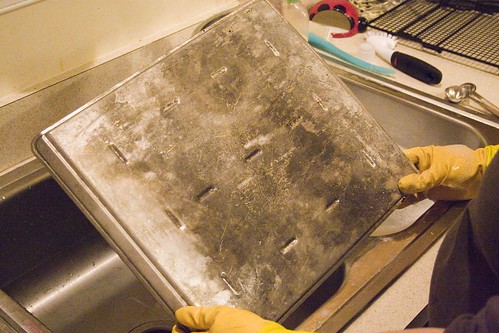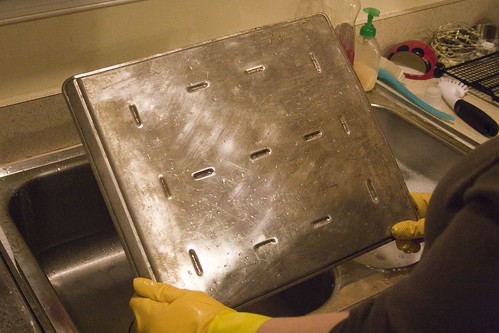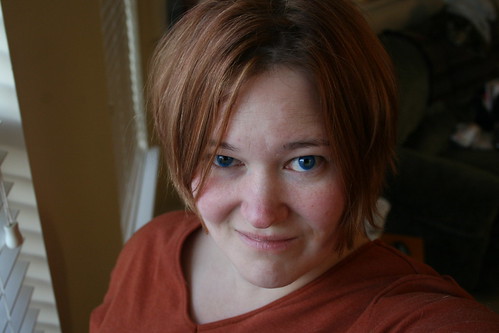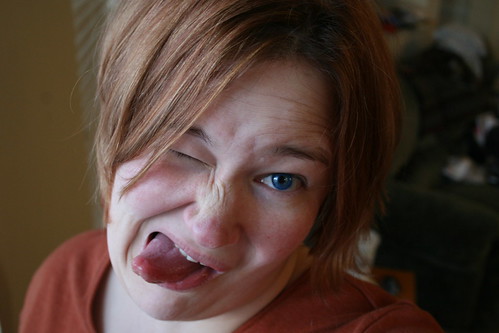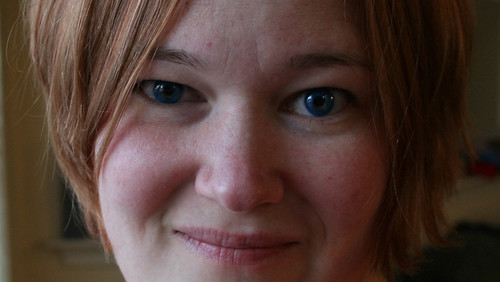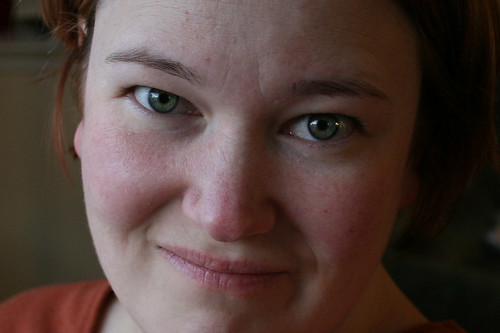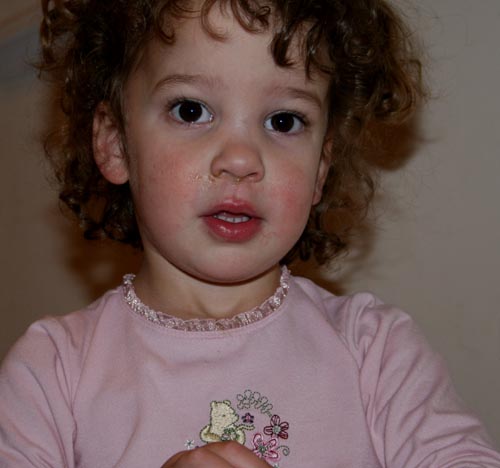I have some very VERY exciting news.
No, it’s not the fact that Jocelyn is basically potty trained. (Although that is very exciting.)
No, it’s not the fact that yet ANOTHER cat in our household of 3 felines is peeing in places not occupied by litter. (Exciting, but not in the nice variety.)(she is at the vet building up a supply of urine in her bladder to be extracted and tested in the morning as we speak.)
While the above items are TRUE, they are not the very VERY exciting news.
I have figured out what camera lens Santa will be bringing me! Yay!
Perhaps if I had blogged about this search, you would feel the same sort of relief that I do. Nay, that my husband does. For no one can feel the relief that James feels now, after listening to me DECIDE, and then change my mind, and then lament on the beauty of the lenses out of my budget, then decide on another one, then decide no lens, a FLASH, a FLASH is where it’s at, and then just cry because I have no flipping idea what to get, and then FINALLY make up my mind on A LENS A GLORIOUS LENS!
That is the sort of relief that only James can feel. But just so you can get a better feel on that sort of relief, I’d like to go through what’s out there, and include links and what not so if there are any other photographers-in-learnin’ that would like to follow the links and learn along with me, they can do that. If you’re not interested, then I’ll see you later alligator, as Ethan says CONSTANTLY.
I have had the aid of my brother Joseph, who is a great photographer. So great, that I woudn’t let him enjoy my wedding, but instead made him shoot it for me, for free (yay me!). He’s been a great source of info for me and he didn’t laugh at my dumb questions. (at least, not out loud).
First of all, I have a Canon 30D with the kit lens, which is the Canon EF-S 18-55mm f/3.5-5.6 II. We purchased this baby when it first came out, thus blowing our wad, and having no more moolah on a better lens. We knew that the lens it came with was pretty much crap, but it’s not like we’re all that stellar photographers (YET) anyway, so it’s been a good lens to learn and experiment with. With Christmas around the corner, we decided that it’s a good time for new lens. YAY!
Before I get into this, I want to state that most of the sites I’ll be linking refer to both Canon and Nikon cameras/lenses. Since I’m in the market for a Canon mount lens, I focused on Canon. Pretty much everything I’ve read suggests that both Canon and Nikon are quality, and neither are really “better” than the other. The sites all have Nikon information as well.
I started off looking at this page here:
photo.net: Building a digital SLR system
http://photo.net/equipment/building-a-digital-slr-system/
written by Philip Greenspun, updated 9/2006
The first very important tidbit I learned, was exactly what the difference was between the different flavors of digital cameras. You’d think I would know this, but I didn’t. I knew that SLR meant that the lens came off the front, but that is about all I knew. I learned that the three basic SLR digital cameras fall into these categories: small lenses, small sensor; big lenses, small sensor; and big lenses, big sensor. I knew my dad’s Canon 5D was a lot more expensive than my 30D, but now I know it’s because it has a big sensor inside, while mine has a small sensor. The Canon 5D is the only camera (I beleive, anyway) that has a big sensor. Nikon digital SLRs all have a small sensor
This shed a bit of light on the whole different lenses / crop / x1.6(canon) / x1.5(nikon) stuff. I have heard this, but never really understood it. I still don’t REALLY understand it (but I’m closer than I was before) so I will quote Mr. Greenspun:
“Having a smaller sensor is like cutting the center out of a drugstore proof print. You don’t capture all the information on the left and right and top and bottom of the frame. It is as though you took the picture with a telephoto lens. The viewfinder has been adjusted so that what you see optically is what is captured in the digital file. If you’re coming from the film world you will need to do a mental adjustment. A 50mm normal perspective lens on a big lens/small sensor camera behaves like an 80mm telephoto lens on a film camera.”
With Canon lenses, the “-S” means that the lens is built for these small sensor cameras (ie: EF-S 18-55mm).
Nikon uses “DX” to denote this type of lens.
Even though these lenses are built specifically for small sensor cameras, you still have to do the math to determine their actual end result.
While you CAN use normal lenses on a small sensor body, you have to do the math to determine what the actual focal length is. However, if you were to use a lens specific to the small sensor camera (EF-S or Nikon’s DX), they wouldn’t work on a large sensor camera. Or rather, they would, but the edges of the photo would be blurred/black, because the lens does not go to the edges of the sensor.
Mr. Greenspun goes through the different camera bodies VERY briefly, and I skipped over most of it, because I already have my camera body. He then goes on to suggest that you start with a “normal” lens.
He defines normal as the same perspective as normal human vision, which would be about a 50mm lens. His reasoning was pretty sound to me, being that,
“The novice photographer who starts with a zoom lens typically uses it in lieu of backing up or stepping forward. An experienced photographer visualizes the scene first, chooses a focal length, then gets into the appropriate position to capture the scene with that focal length. It is much better to get a lens with a fixed focal length, learn to recognize scenes where that lens can be used effectively, and then add additional lenses once that focal length has been mastered. So even if you have the $1000+ to buy a high quality zoom and the muscles to lug it around it is probably a poor choice of first lens.”
Hi! My name is Amy, and I am Guilty As Charged! I’ve totally stood where I was and zoomed away, only moving my feet when I couldn’t get the shot I wanted at the end of the zoom. So seeing myself in that statement, I was on board with his suggestion of a prime focal lens.
I also learned about aperture. This stuff, I kind of already knew. The f/stop on a lens represents the aperture. there are steps between each aperture, called “stops”. The smaller numbers are good, and they actually mean it is a bigger aperture. I did not really understand this until my brother pointed out that the number is actually the bottom number of a fraction.
So while I knew that f/2 was actually a BIGGER aperture than f/4, it made a lot more sense to me when I realized that it is actually over 1, IE: 1/2 is much bigger than 1/4. It’s TWICE as big! This was where having a photo-geek brother paid off.
So why is bigger better? Aperture is basically how big the lens opens to let the light in to the sensor. If there is a lot of light, you can snap off a picture very quickly and it will be very sharp. So when someone says that an f/2.8 lens is very fast, you know that it is because of the amount of light it lets in by that big aperture. On the flip side, if the lens has an aperture of f/5.6, it is a smaller aperture and therefore is letting a lot less light in. That means that the shutter has to stay open LONGER in order to get the light, which means it takes longer for that shutter to snap, and is therefore a slower lens. A slower lens may be affected by camera shake, which results in blurriness. It means that if you’re operating in low light, unless you use a tripod, you’re going to need to fight some blurriness with a high ISO (faster speed, but more graininess in the photo).
If there was one thing my brother hammered into me, was get a fast lens. He discouraged anything over an f/4, and who was I to argue?
So after reading and rereading photo.net’s ‘building a system’ page, I started to wander off from the “get a prime, fixed length lens”. Sure. I could get a fixed lens, and learn how to frame a photo up right the first time.. but surely I’m good enough now that I can skip this and get a zoom, right?
I started looking around at wide angle lenses.
Joe immediately suggested the Tokina 12-24mm f/4. 12mm is a very wide angle indeed, even when you do the multiplication for the cropped sensor. He pointed me to this site, which has a wealth of information for me to soak in:
http://www.kenrockwell.com/tech/digital-wide-zooms/comparison.htm
Ken Rockwell: wide angle zoom comparison
Nikon users will love his site, as he uses (and adores) Nikon. He has a lot of articles on cameras, lenses, how to become a better photographer, etc.
In this comparison, he suggests getting the Nikon lens unless you want to be cheap, in which case get the Tokina. However, at the bottom of the review, he states (under the heading, “What About Canon?”):
“I’d buy the Canon 10-22mm lens in an instant if I had a Canon digital camera. The Canon 10 – 22 mm is better than any of these four lenses, including the Nikon.”
He has a full review for this Canon lens here:
http://www.kenrockwell.com/canon/1022.htm
The Canon 10-22mm was a bit out of my price range, and Joe still insisted that his Tokina (which is cheaper) had the better aperture with the maximum f/4 (the canon 10-22 goes from f/3.5-4.5).
So I was really struggling for which one to pick… when suddenly it didn’t matter anymore.. I was wondering why I wanted a wide angle in the first place. I like to think that I do take some good shots once in a while, but those bad shots? A wide angle lens just means that there will be MORE badness. A crappy photo will turn into WIDER crappiness. Is that REALLY what I want? Also, I wanted to fiddle more with shallow depth of field, which wide angle lenses don’t really do, by their inherent nature. They are for capturing more of the environment around your subject, not make it blurry.
Really.. I like wide angle shots, but generally, I’m taking pictures of my kids most of the time. I need a good portrait lens, really, which means a telephoto lens, with a zoom to be versatile.
(This is where James is bashing his skull in. Fickle fickle Amy. Hand On Forehead. Le Sigh.)
Telephoto means a long lens. At least with telephoto, there’s only 1 lens that really caught my eye.
70-200. Canon makes this lens in several versions. Let’s go from cheapest, to most expensive, shall we?
First I need to learn ya some more letters n’ stuff. Canon uses the following:
IS: Image Stabilization – this is found on longer lenses, as the longer focal length tends to magnify camera shake. Helps offset bigger (less light=longer shutter speeds=more camera shake exposed=blurrier) apertures. I have no idea how it does this. I like to think there’s a little man in there, holding things steady.
USM: ultra sonic motor. This is the auto focus motor. With it, it’s silent and quick. Without it, it’s not as silent or quick
L: this denotes that the lens is in Canon’s professional series. top quality stuff.
OK, now that we’ve got all that out of the way (these prices are all WITHOUT the current Canon rebates going this holiday season)…
Canon EF 70-200mm f/4L USM ($580) small (i say small, but f/4 really IS a very decent aperture) aperture
Canon EF 70-200mm f/4 L IS USM ($1060) small aperture, but WITH image stabilization!
Canon EF 70-200mm f/2.8L USM ($1150) ooh! BIGGER aperture (remember smaller numbers are better/bigger really the bottom half of a fraction) but no image stabilization
Canon EF 70-200mm f/2.8L IS USM ($1700) OMG!small aperture AND image stabilization! Zounds!
The f/4s were out of the running. Sorry. I need the wide aperture. The f/4 with IS would help offset any blurriness, but if you’re going to spend a grand on a lens, then why not cough up another hundred bucks and get the f/2.8 w/out IS? And of course, there’s the holy grail of the lens, which of course, is the one I want, which would be the f/2.8 with IS. Which would be $1700. Guess what, that ain’t happening.
In all my reading over the last 2 weeks, there was a quote I heard, can’t remember where, or who it was, but roughly, “the lens is usually better than the photographer using it” (that’s me, hehe). I can’t think of truer words in regards to the thought of me spending 1700 on a lens. Way more than I need at this juncture, or even know what to do with. Remember Philip Greenspun saying, “So even if you have the $1000+ to buy a high quality zoom and the muscles to lug it around it is probably a poor choice of first lens.” Gulp. OK, yeah, so he’s talking about me.
So taking these things into account (hi, i’m still learning, and 1700 is out of my league) still, honestly, a telephoto zoom is probably the lens that I am going to use the most. I know I would like to get a wide angle zoom at some point, but I don’t think this is the time. Telephoto is what I need, and while this one is overkill, something like it is really what would suit me best at this time.
So, after moping around about my lack of two grand to drop on a super duper fancy lens, looking at the wide angles again, I went back to the original idea of getting a fixed focal length lens. I started looking around dpreview.com‘s forums and caught wind of the Canon 50mm f/1.8, which is a cheap, but still great lens at about 70 bucks (look at that super fast aperture!) I could get a lens, a fancy flash to bounce off walls and my my kids look less orangey and grainy (let’s face it. i work during the day. i take most of the kid photos in yucky light.) and even a new bag to top it off.
It all SOUNDED so good, but I knew it really wasn’t what I wanted. This was MY CHRISTMAS PRESENT DAMMIT. I could go buy a 70 dollar lens any old time of the year! I DON’T WANT A FLASH (right now)! I WANT A FANCY LENS!
So what to do, what to do. I lamented to my brother, who shot back, “Look into Sigma.”
And so I did.
And I found this baby: Sigma 50-150mm F/2.8 APO EX DC HSM for about $670.
f/2.8! yay! 50-150! if we do our math for my cropped sensor, that is actually about 80-240! yay!
All those letters behind the lens stuff mean something too! yay! I can’t remember what though, and I’m too lazy at the end of this long assed post to go look.
I did go searching from some reviews or feedback on this lens, and I didn’t find anything on sites, but I did find several mentions of it on the dpreview.com forums, all positive.
And so, I am a giddy schoolgirl who will be setting out milk and cookies for Santa to make sure he doesn’t pinch it for himself.
So I am happy. I learned soooooo much in this experience of trying to find the right lens for me. All about aperture, and big sensors and little sensors and lenses, and image stabilization and ultra sonicy goodness that I’m going to go lay down and dream about nice, soft bokeh.
If you are still reading this… Hoorah! I will send you a candy cane as a reward. Just you email me and see if I don’t.
-amy comes right down santa clause lane.












